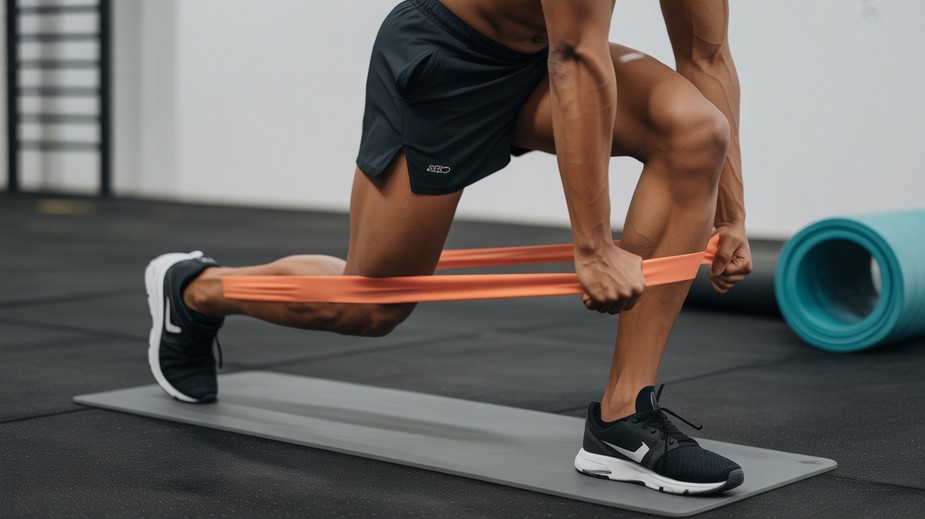Integrating Activation Into Training
Activating your glutes is far more than just a simple warm-up ritual; it’s a fundamental strategy that should be seamlessly integrated throughout your entire training philosophy. A brief session of exercises like clam shells before a workout is often insufficient to counteract the effects of prolonged inactivity or ingrained poor movement patterns. Lasting change stems from consistently engaging your posterior chain not only during your workouts but also into your recovery phases. This holistic approach strengthens the neuromuscular connection, ensuring your glutes fire optimally and remain engaged throughout even your most challenging exercises, not just for the initial few minutes. 💪
One effective technique is the implementation of pre-workout priming sequences. These are concise, targeted routines, typically lasting 5-10 minutes, specifically designed to ‘awaken’ the glutes before you commence your primary lifts. Exercises such as banded lateral walks, glute bridges, or bird-dogs serve as excellent dynamic warm-ups that directly target the muscles essential for stable, powerful movement. By consistently incorporating these exercises, you train your brain to efficiently recruit the glutes from the very outset of your training session, thereby reducing the reliance on compensatory muscles often associated with knee pain.
Beyond the initial warm-up, it’s crucial to focus on embedding glute cues in compound lifts. This involves actively concentrating on contracting and squeezing your glutes during foundational exercises like squats, deadlifts, lunges, and hip thrusts. For instance, consciously contract your glutes at the peak of a squat or deadlift to ensure a safe and powerful lockout. During a lunge, focus on driving through the heel of your front foot and feeling the engagement in your glute muscle. This mindful engagement reinforces the correct glute activation pattern under load, which is vital for enhancing both performance and stability. You can find valuable resources on proper form and effective cueing from reputable organizations such as the National Strength and Conditioning Association (NSCA) or various qualified physical therapy websites.
Finally, incorporate recovery-focused activation strategies into your routine. Gentle, non-fatiguing activation exercises can be highly beneficial on rest days or following a workout. Simple glute squeezes, gentle bridges, or brief isometric holds can help improve circulation, alleviate stiffness, and sustain that vital neuromuscular connection without adding significant training stress. This consistent, low-intensity engagement helps your posterior chain remain alert and ready to activate when necessary, supporting long-term strength development and facilitating **pain-free movement**. Integrating activation across these distinct phases of your training cycle establishes a comprehensive approach that maximizes effectiveness.
Sustaining Pain-Free Movement Long-Term
Achieving pain-free movement, particularly when addressing issues like chronic knee pain linked to glute and posterior chain dysfunction, represents a significant milestone. However, maintaining this state requires a proactive and continuous effort. It’s not merely about resolving an existing problem; it’s about cultivating sustainable habits that support your body’s intricate mechanics every single day. Consider it as maintaining your most vital asset – your physical self. 🌱
A cornerstone of long-term success is mastering **auto-regulation strategies**. This involves developing the ability to attentively interpret your body’s signals. Are you experiencing unusual levels of fatigue? Is your sleep quality compromised? Are your stress levels elevated? These are crucial indicators that your body may not be recovering adequately from training or the demands of daily life. Ignoring these warning signs can potentially lead to overloaded tissues and a resurgence of pain. Implementing planned deload weeks or judiciously reducing the intensity or volume of your workouts when needed are intelligent forms of auto-regulation that help prevent overtraining and potential injury flare-ups.
Beyond structured training sessions, **lifestyle integration** plays an indispensable role. Your physical well-being extends far beyond the confines of the gym. Actively seek opportunities to incorporate more movement into your daily routine. Choose the stairs over the elevator, opt for walking meetings, utilize a standing desk, or engage in active hobbies. Simple habits such as regular stretching, performing dynamic warm-ups before activities, or taking mindful movement breaks throughout the day can significantly contribute to maintaining mobility, flexibility, and overall joint health. This consistent, low-level activity provides continuous support for the sustained function of your glutes and the entire kinetic chain. 🚶♀️
Finally, make **periodic movement quality reassessments** a standard practice. Your movement patterns can undergo subtle changes over time influenced by shifts in lifestyle, stress levels, or simply the development of new habits. What felt correct six months ago might have subtly drifted. Regularly checking in – perhaps by filming yourself performing key exercises, noting any new aches or compensatory movements, or scheduling check-ins with a qualified movement professional such as a physical therapist or experienced trainer – can help identify potential issues before they progress into pain. This proactive monitoring is key to detecting dysfunctions early and making necessary adjustments to your activation and strengthening routine.
By embracing auto-regulation, seamlessly integrating movement into your daily lifestyle, and consistently assessing your movement quality, you build a robust and resilient foundation. These strategies empower you not only to overcome existing discomfort but to enjoy **sustained, pain-free movement** for years to come. Consistency and conscious awareness are your most valuable allies on this enduring journey. 🧘♀️








